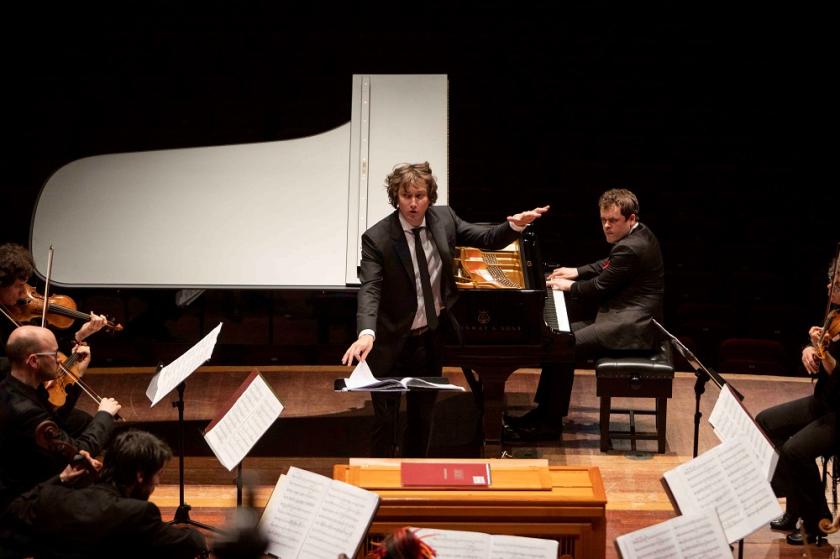Nobody would describe Felix Mendelssohn as a fringe composer, but his piano concertos aren’t exactly central classical repertoire either. They lack the foundational status of Mozart’s and the high Romantic seriousness of Beethoven’s or Brahms’, and Mendelssohn doesn’t help himself in the way that an air of the faintly hilarious hangs around his First Piano Concerto.
It’s often so hyperactive that it’s impossible to take it seriously, with an almost comically energetic first movement that feels like a greyhound straining at the trap, and a finale so light-hearted that it’s almost a self-parody.
So it’s a credit to both pianist Benjamin Grosvenor (pictured below) and conductor Maxim Emelyanychev that, in this Scottish Chamber Orchestra performance, they resisted the temptation to take it too heavily and instead got the balance of beauty and frivolity just about right. Grosvenor’s punchy chords and hectic runs seemed spiced with a little sprinkling of humour, and that suited the music really well. After all, this is the sort of concerto you could imagine Bugs Bunny playing in a Looney Tunes parody, and both the highly strung first movement and the filigree finale were played with a winning lightness of touch.  Moments of lyrical songfulness were balanced against this, however, from both soloist and orchestra, nowhere more so than in the lovely slow movement where Grosvenor took every opportunity to play with ringing bel canto clarity, balancing the high-voltage energy of the outer movements, and the orchestra responded in kind, the violas and cellos not so much playing the main theme of the Andante as caressing it.
Moments of lyrical songfulness were balanced against this, however, from both soloist and orchestra, nowhere more so than in the lovely slow movement where Grosvenor took every opportunity to play with ringing bel canto clarity, balancing the high-voltage energy of the outer movements, and the orchestra responded in kind, the violas and cellos not so much playing the main theme of the Andante as caressing it.
It helped that the orchestra was playing with natural brass and timps, and that the strings were using their vibrato very sparingly. That added extra colour not only to Mendelssohn’s concerto but also to Schumann’s Symphony No. 4 (in the revised version). With this playing and Emelyanychev’s sense of direction, the symphony emerged as a model of concision with each theme emerging organically from the one before, and every phrase carefully articulated. Particularly masterful was the transition to the finale, with strings slowly coalescing over portentous brass fanfares, leading into a final movement of exuberant energy. Not quite of joy, however. Even in Emelyanychev’s hands, this was a finale that didn’t quite brim over, and a symphony that never quite managed to achieve consummation. This was a fine performance, but it lacked that final edge of jubilation that its richest interpreters find buried within it.  Some would argue that that’s more Schumann’s fault than the performers’. Maybe, but there’s a more clear-cut case of blame when it comes to Brahms’ Tragic Overture, in which the composer loses sight of the structural surety that he displays with such mastery elsewhere and ends up evoking a generalised mood through some note-spinning longueurs. The SCO played it with surprising silkiness in the period strings, and Emelyanychev shaped it with a nice sense of edge, but not even they could dissuade me from the view that Brahms should have stripped at least five minutes off it. Where’s the editor when you need him?
Some would argue that that’s more Schumann’s fault than the performers’. Maybe, but there’s a more clear-cut case of blame when it comes to Brahms’ Tragic Overture, in which the composer loses sight of the structural surety that he displays with such mastery elsewhere and ends up evoking a generalised mood through some note-spinning longueurs. The SCO played it with surprising silkiness in the period strings, and Emelyanychev shaped it with a nice sense of edge, but not even they could dissuade me from the view that Brahms should have stripped at least five minutes off it. Where’s the editor when you need him?














Add comment